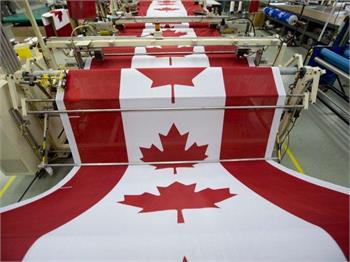 |
Here’s what needs to happen for Canada’s economy to take off again
 |
Here’s what needs to happen for Canada’s economy to take off again
Republish Reprint
By : Gordon Isfeld | August 30, 2013
“Business investment tends to track U.S. growth. So it’s likely that until the U.S economy picks up a little bit more, business investment is going to remain pretty lackluster. And, hopefully, exports will pick be up some of the slack,” says Benjamin Reitzes, senior economist at BMO Capital Markets.
Brent Lewin/Bloomberg“Business investment tends to track U.S. growth. So it’s likely that until the U.S economy picks up a little bit more, business investment is going to remain pretty lackluster. And, hopefully, exports will pick be up some of the slack,” says Benjamin Reitzes, senior economist at BMO Capital Markets.
Twitter Google+ LinkedIn Email Comments More
OTTAWA — The U.S. economy has been picking up and overburdened Canadian consumers are still spending, as are fiscally strapped governments. But that’s hardly a scenario for robust growth in this country — not without the long-promised increase in business investment and expanded exports.
Without that corporate infusion, we’ll see much of the same near-anemic growth as in many previous months and quarters.
The most recent reading showed gross domestic product growing at an annualized pace of 1.7% between April and June.
That’s down from a revised 2.2% increase in the first quarter, Statistics Canada said Friday, which itself is less impressive than the original estimate of 2.5% growth.
“Consumers shouldn’t be [providing] an increasing share of the economy. They shouldn’t be adding all that much to their debt loads,” says Benjamin Reitzes, senior economist at BMO Capital Markets.
“For businesses, that reluctance is still there. They don’t want to spend that money just yet,” he said. “Business investment tends to track U.S. growth. So it’s likely that until the U.S economy picks up a little bit more, business investment is going to remain pretty lackluster. And, hopefully, exports will pick be up some of the slack.”
In its report, Statistics Canada said household spending was the biggest contributor to growth in the second quarter, rising by 0.9% — the largest gain since the fourth quarter of 2010. Most of those purchases were for vehicles, the fourth straight monthly increase in car sales and largest gain in more than a year.
Government spending, meanwhile, rose 0.6% in the second quarter — the fourth consecutive three-month gain.
In contrast, business investment in machinery and equipment was down 0.5%. Exports were up by just 0.2%, following a 1.3% gain in the previous three-month period.
It is not clear that such consumer spending can be sustained in subsequent quarters, given record household debt
“It is not clear that such consumer spending can be sustained in subsequent quarters, given record household debt and rising mortgage rates,” said United Steelworkers economist Erin Weir.
“Similarly, existing austerity policies and the federal government’s commitment to eliminate its deficit by 2015 for electoral reasons cast doubt on whether public expenditure will continue to support economic growth.”
In what is perhaps a sign of Canada’s inconsistent climb out of recession, private-sector forecasters had expected annualized growth of only between 1.5% and 1.6% in the second quarter.
On a monthly basis, however, GDP declined 0.5% in June — in line with private-sector forecasts — compared to a 0.2% gain in May. The monthly change was the largest drop since March 2009.
During June, the construction sector fell 1.9%, partly due to the construction strike in Quebec. Manufacturers saw production drop 1.3%, while mining and oil and gas extraction declined 0.3%.
“The quarter ended with a thud,” said CIBC World Markets economist Emanuella Enenajor.
“But there was no slowdown in household consumption, with spending there soaring. And even governments were less of a drag than expected . . . But a drag came from business capital and inventory investment.”
Leslie Preston, at TD Economics, said a drop in machinery and equipment spending “is consistent with flagging business confidence and [a] weak profit picture in recent quarters.”
Modest growth in the second quarter served as a reminder that Canada’s economy is not yet out of the woods
“Modest growth in the second quarter served as a reminder that Canada’s economy is not yet out of the woods after last year’s growth slump. Canada is dependent on fortunes south of the border, and sub-par growth stateside in the first half of the year weighed on trade with knock-on effects on business investment. Fortunately, the resilient consumer is holding its own, as spending and residential investment continue to hum along, buoyed by decent employment growth and income gains.”
Still, the overall quarterly reading was above the 1% annualized increase expected by the Bank of Canada in its July outlook.
The Canadian economy grew by 1.7% in 2012, and the central bank is forecasting a gradual improvement to 1.8% this year and 2.7% in both 2014 and 2015. For the third quarter of this year alone, it is looking for 3.8% growth.
South of the border, the U.S. economy posted a gain of 2.5% in the second quarter of this year, beating independent forecasts of 2.2%. The outlook for the second half of 2013 is also around the 2.5% mark.
Moderate and choppy growth has left the BoC on the sidelines since September 2010, when policymakers set their key interest rate at 1%, initially to encourage spending by businesses and households coming out of the recession.
Economists do not anticipate any increase in that rate until at least the last part of 2014.
876 page views
|
|
|
|